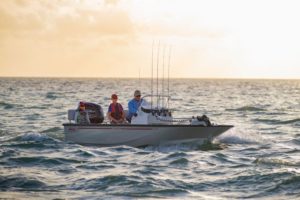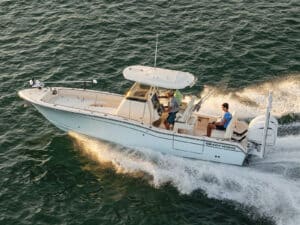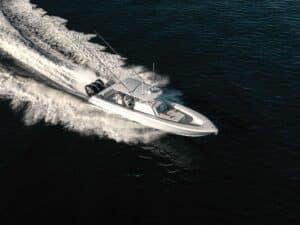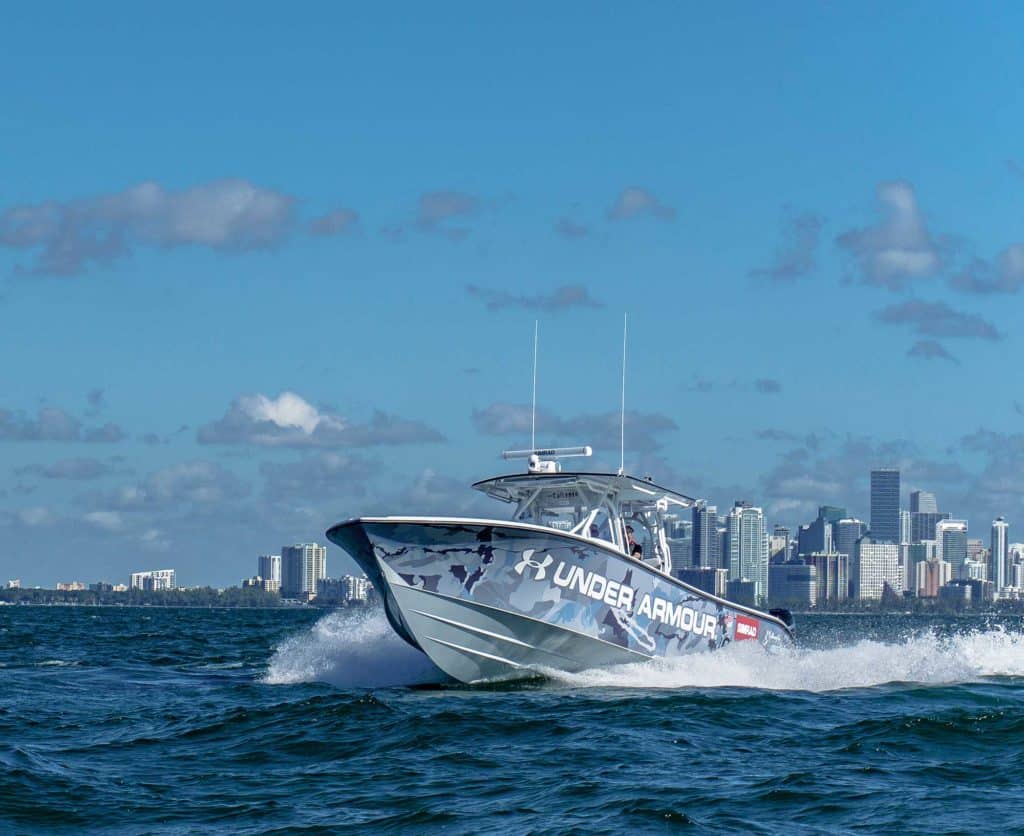
When someone mentions carbon fiber, you might think of a helm panel with that popular faux-fiber pattern. Yet genuine carbon-fiber construction has only recently begun to permeate the marine industry. It’s currently used by a limited number of marine manufacturers but will increasingly weave its way aboard our fishing boats.
Perfected in the aerospace industry, sophisticated carbon-fiber construction has replaced many traditional aluminum structures in new commercial aircraft. Boeing’s 787 Dreamliner, for example, uses carbon-fiber construction for half of its airframe to save weight while maintaining strength and stiffness.
Lighten Up
The same techniques have been adopted by boat brands such as Barker Boats, Hell’s Bay, Maverick Boats and Yellowfin Yachts.
Carbon fiber cuts 20 to 24 percent of the overall boat weight versus fiberglass, says Wylie Nagler, president of Yellowfin Yachts, which has offered carbon-fiber construction in its boats ranging from 17 to 42 feet since 2015. Boats using construction are lighter because they require less material and resin, owing to the carbon fiber’s greater strength and stiffness.
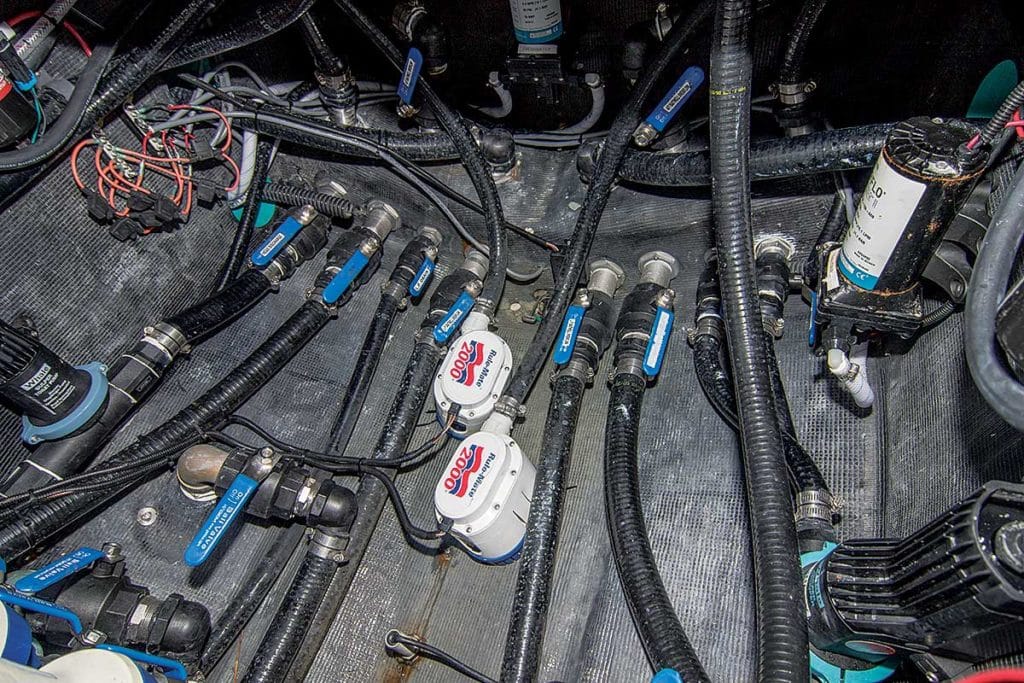
“The lighter the boat, the more efficient it becomes,” says Nagler. Top speeds also increase. “We have found 6 to 7 mph increases in our bigger boats,” he reveals.
In addition, lighter boats tend to float higher, and that makes carbon-fiber applications ideal for flats boats, says Charlie Johnson, director of marketing for Maverick Boat Group (MBG). The Maverick line includes three Mirage flats models: the Maverick 17 HPX-S, Maverick 17 HPX-V and Maverick 18 HPX-V.
“Maverick’s flats boats use a combination of carbon fiber, Kevlar and Carbon-Kevlar fiber in a proprietary resin-infusion system known as VARIS,” Johnson explains. This results in boats that weigh about 25 percent less than comparable fiberglass flats models. “As a result, Maverick boats draw less water and are easier to push-pole,” Johnson says.
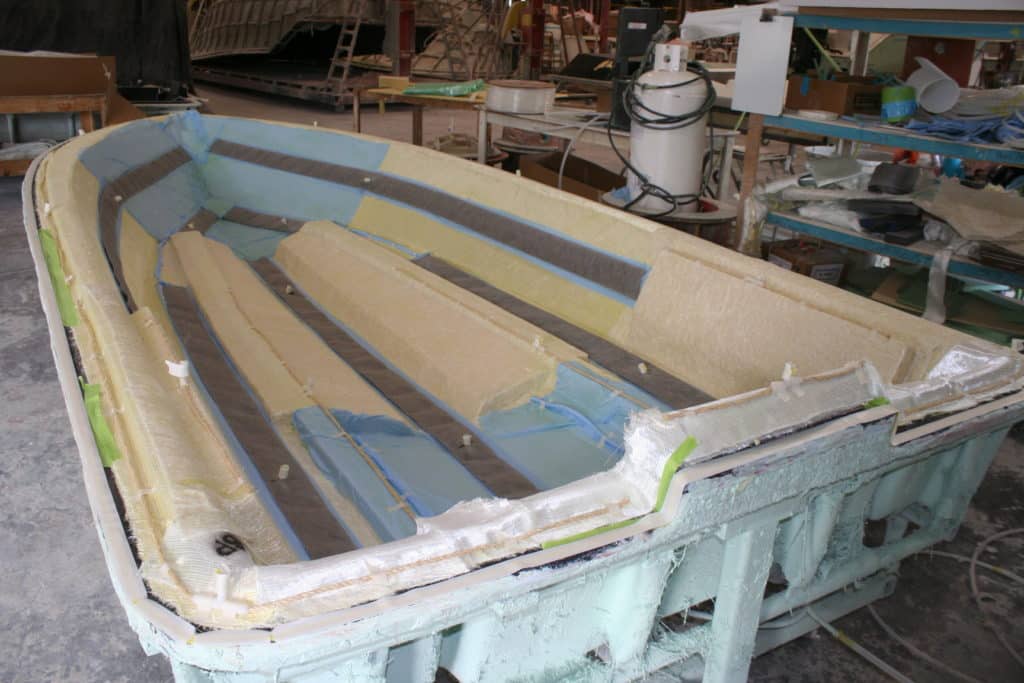
Stiffness Factor
Carbon fiber’s stiffness has led companies such as Rupp Marine and Taco Marine to use it for outrigger poles. “The stiffness of carbon-fiber poles eliminates the whipping action common to aluminum or fiberglass poles while trolling in rough seas,” says Jose Chao, strategic product category manager for Taco. This helps keep baits and lures from being unnaturally flung out of the water while trolling.
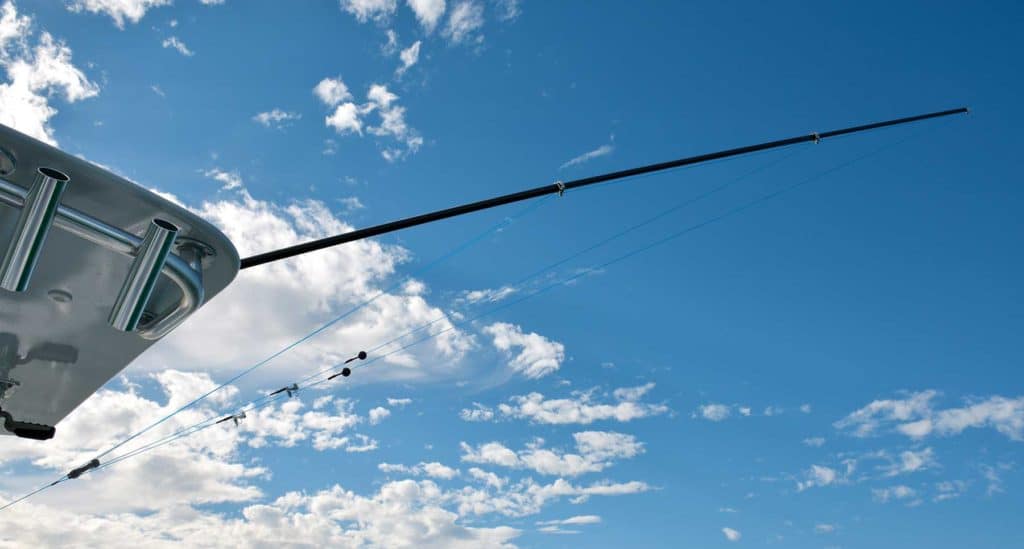
You’ll see increasing use of carbon-fiber construction in accessories in the next few years, Chao says. The stiffness and light weight of carbon fiber will supplant aluminum and even stainless steel in marine in parts such as seat pedestals. “The more weight you can take out of a boat without sacrificing strength, the more fuel efficient it becomes,” he points out.
While some brands offer entire boats built from high-tech fibers, others feature such construction only where extra stiffness is required. In MBG’s Cobia and Pathfinder lines, for example, carbon fiber is used to reinforce the foam-filled prisma beams supporting the decks in these boats, Johnson points out.
Shifting Weight
Building a carbon-fiber boat is not as simple as swapping out fiberglass with the high-tech fibers. Lamination schedules, resins and infusion techniques differ significantly, says Nagler. “Epoxy resins, for instance, are often used with carbon-fiber construction. But gelcoat won’t stick to epoxy,” he says. So a boat built with epoxy has to be painted.
Changing the overall weight of the boat also calls for re-evaluating the center of gravity (COG). Because the weight of the outboard engines doesn’t change, a carbon-fiber version tends to be more stern heavy and will ride bow high unless the COG is shifted forward for balance. Relocating elements such as the fuel, water and waste tanks effectively moves the COG.
One school of thought holds that heavier boats ride more smoothly because the heft tends to more easily slice through waves and cushion the jolts of rough seas. Yet Nagler points out that there are a number of factors that determine how smoothly a boat rides.
“The stiffness of a carbon-fiber boat is better at punching through waves,” he explains. “Plus, because the boat is lighter, it rides higher and can better get on top of the waves while underway to smooth the ride.”
UV Protection
Shielding carbon-fiber components from the damaging rays of the sun is particularly important, says Chao. Boats feature gelcoat or marine paint for UV protection, but carbon-fiber outriggers traditionally have been left uncoated. As a result, the fibers turn a cigarette-ash gray after a year or two of constant sun exposure.
To combat such degradation, make sure the carbon-fiber poles you buy feature a barrier coating. Taco’s carbon-fiber Tele-Outriggers, for instance, are sprayed with multiple applications of Awlgrip marine clear coat. “This provides long-term protection and keeps the poles looking good,” Chao says.
At the same time, proper care and maintenance is essential. This includes washing the poles with soap and water after every use to clean away damaging salt residue. Lubricating the contact points of telescoping poles with light oil helps keep salt from making its way inside the tubes and damaging the outrigger from within. If you don’t plan to use your outriggers for a long period of time, remove and store them indoors.
Electrifying News
Unlike fiberglass, carbon fibers conduct electricity. That poses a challenge for boatbuilders using this material because a boat essentially becomes one big conductor. “You have to be very conscientious about electrical grounding issues and where and how you run wires,” says Nagler. “We have learned how to do it properly.”
To minimize electrical issues, Yellowfin uses only fiberglass construction for its center consoles, where many of the boat’s electrical elements are housed.
The conductivity of carbon-fiber outrigger poles is also important to keep in mind when you are caught in a thunderstorm. Retract the poles as quickly as possible in such conditions.
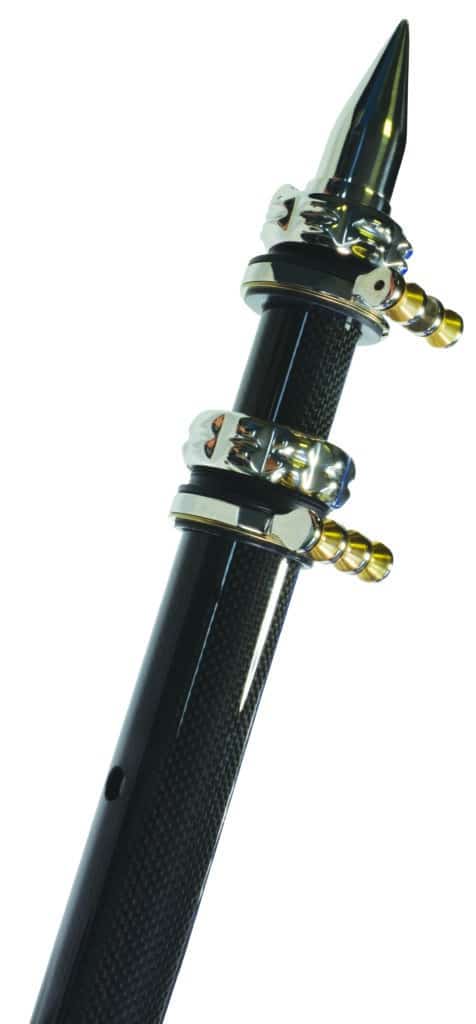
Ultimately, cost represents the biggest impediment to the widespread application of carbon-fiber technology in boats. “It adds considerably to the cost,” says Johnson. Raw materials are five to six times more expensive than conventional materials, he reveals. That results in a 25 percent increase in the price of an MBG carbon-fiber boat.
Nagler calculates the cost increase another way. “Carbon-fiber construction adds about $1,000 per linear foot to the cost of the boat,” he says.
These kinds of increases extend into the marine-accessory market, where carbon-fiber components cost more than three times as much as aluminum pieces, says Chao. A pair of Taco 15-foot aluminum Tele-Outrigger poles retails for about $500, while a pair of Taco 16-foot carbon-fiber Tele-Outrigger poles sells for about $1,700.
Will prices come down in the ensuing years? Time will tell. In the meantime, if you want a boat that floats higher, runs faster and fishes farther, or stiffer outriggers that refuse to whip, you’ll have to pony up to satisfy your carbon craze.

